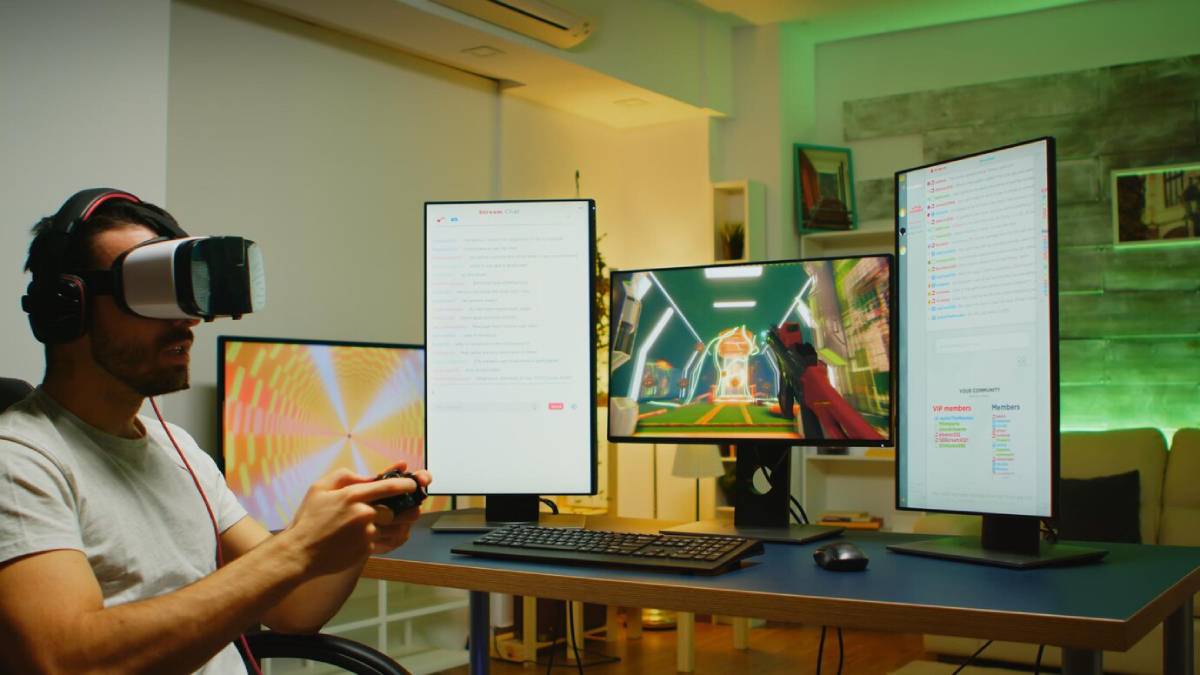
Balancing Realism and Fun in FPS Game Design
Dive into a virtual world. The stakes are high, and adrenaline pumps. Every choice can lead to victory or defeat. First-person shooter (FPS) games have drawn in players for decades. This is their appeal. Making an FPS game that balances realism and fun is tough. Developers must balance immersion and authenticity with enjoyment and accessibility. This blog will look at the balance between FPS realism and fun. Let’s look at how these games function. We’ll also reveal the keys to creating the perfect FPS experience. Whether you’re a seasoned gamer or just curious, this journey will be fun and surprising.
Key Benefits
The Immersive Power of Realism
In FPS games, realism is often heralded as the ultimate goal. But why is realism so important? For many players, the appeal lies in the immersive experience. Realistic graphics, lifelike sounds, and accurate physics can take players to another world. Picture the crunch of gravel beneath your feet. Feel the kick of a weapon. Watch how wind and gravity change a bullet’s path. These elements boost immersion. They make players feel like they’re really in the game world.
Moreover, realism can add layers of complexity and challenge.
In a realistic FPS, players need to think about:
- Ammunition management
- Weapon accuracy
- Environmental hazards
This adds depth to the game’s strategy and helps players build real-world skills like quick decision-making and situational awareness.
The Joy of Fun and Accessibility
While realism has merits, fun is the cornerstone of any successful game. After all, games are meant to be enjoyed! Fun in FPS games comes from quick action, inventive gameplay, and competitive excitement. It’s those thrilling times when you outsmart an opponent or accomplish the impossible.
Fun also ensures that games are accessible to a broader audience. Not everyone wants to spend hours mastering complex mechanics or memorising intricate maps. Developers can draw in hardcore and casual players by using easy controls, exciting stories, and various difficulty levels.

The Balance: Where Realism Meets Fun
Achieving the perfect balance between realism and fun in an FPS game is akin to alchemy. Too much realism can make a game feel boring or heavy. On the other hand, a game that’s too simple may lack depth and replay value. The key is to blend the two smoothly. This creates an experience that is both believable and enjoyable.
This balance is achieved through careful design choices. For example, a game might feature realistic weapon mechanics but simplified health systems. It could also provide different game modes. Players can pick a realistic simulation or a fun, arcade-style experience. Developers can meet different player preferences by offering choices. This way, everyone can find something they enjoy.
Additional Expert Tips & Common Mistakes to Avoid
Best Practices for FPS Game Design
- Listen to Player Feedback: A great way to balance realism and fun is to hear from your players. Regularly gather feedback through playtesting, surveys, and community forums. This will help you see what players like and what needs fixing.
- Iterate and Innovate: Game design is an iterative process. Don’t be afraid to experiment with new mechanics or ideas. Sometimes, the most unexpected elements can become the defining features of a game.
- Focus on Core Mechanics: Find the key mechanics that make your game special. Make sure they are smooth and fun. The shooting mechanics, movement system, and level design are key. These elements form the foundation for everything else.
- Balance depth with ease: It’s key to provide challenges, but keep your game easy to access. Consider implementing tutorials, adjustable difficulty settings, and clear UI elements to guide players.
Common Mistakes and Misconceptions
- Overemphasising Realism: While realism can enhance immersion, it’s not the be-all and end-all. Realistic mechanics, like tricky reloading or precise damage models, can frustrate players and lessen the fun.
- Neglecting Narrative: Ignoring the story can hurt an FPS game. A good narrative gives players context and motivation. Avoid focusing solely on mechanics at the expense of narrative depth.
- Ignoring Player Diversity: Not all players are the same. Some crave competitive multiplayer experiences, while others prefer solo campaigns. Make sure your game has different modes and experiences for various playstyles.
- Sound Design Matters: Sound helps players feel immersed and gives feedback during gameplay. Neglecting sound design can lead to a less engaging experience. Invest in creating dynamic audio that complements the visuals and gameplay.

Advanced Insights
The Art of Player Engagement
Engaging players goes beyond just offering a fun experience. It’s about creating a world that players want to return to repeatedly. This can be achieved through:
- Dynamic Environments: Create levels that evolve based on player actions or choices. This not only adds replayability but also ensures that each playthrough feels unique.
- Meaningful Progression Systems: Use systems that reward players for their time and effort. Progression keeps players invested, whether it’s unlocking new weapons, abilities, or cosmetic items.
- Community Building: Build a strong player community with in-game events, forums, and social media. A lively community boosts the experience and gives helpful feedback for future updates.
Leveraging Technology for Enhanced Realism
Thanks to new technology, developers now have many tools to craft realistic and immersive experiences. Consider incorporating:
- AI and Machine Learning: Use AI to build smarter enemies that adapt and challenge players in fun new ways.
- Virtual Reality (VR): VR enhances immersion. It allows players to interact with the game world physically. However, it’s important to ensure that VR experiences are comfortable and accessible.
- Physics Simulation: Advanced physics engines mimic real-world actions. They can show realistic projectile paths and destructible environments, adding depth and authenticity without compromising gameplay.
- Procedural Generation: This technique keeps content fresh and replayable. It creates new levels, mission goals, or enemy encounters. These change based on player behaviour.
Conclusion: Balancing Realism and Fun in FPS Game Design
As we’ve explored, the balance between realism and fun in FPS game design is both an art and a science. It’s about knowing what your players want. Try new ideas and create an experience that is fun and engaging. Whether you’re a developer making a hit or a gamer curious about the magic, finding balance in an FPS game is an exciting adventure.
In the ever-evolving gaming world, there’s always room for innovation and improvement. So, what are your thoughts on the balance of realism and fun in FPS games? Do you have a favourite game that nails this balance? Share your experiences in the comments below, and let’s continue the conversation. And if you’re a developer, why not take the plunge and experiment with your ideas? The next groundbreaking FPS could be just around the corner.
The key to success in FPS game design is knowing your audience. Embrace creativity and don’t shy away from challenges. Here’s to the future of gaming and the endless possibilities it holds. Happy gaming!


